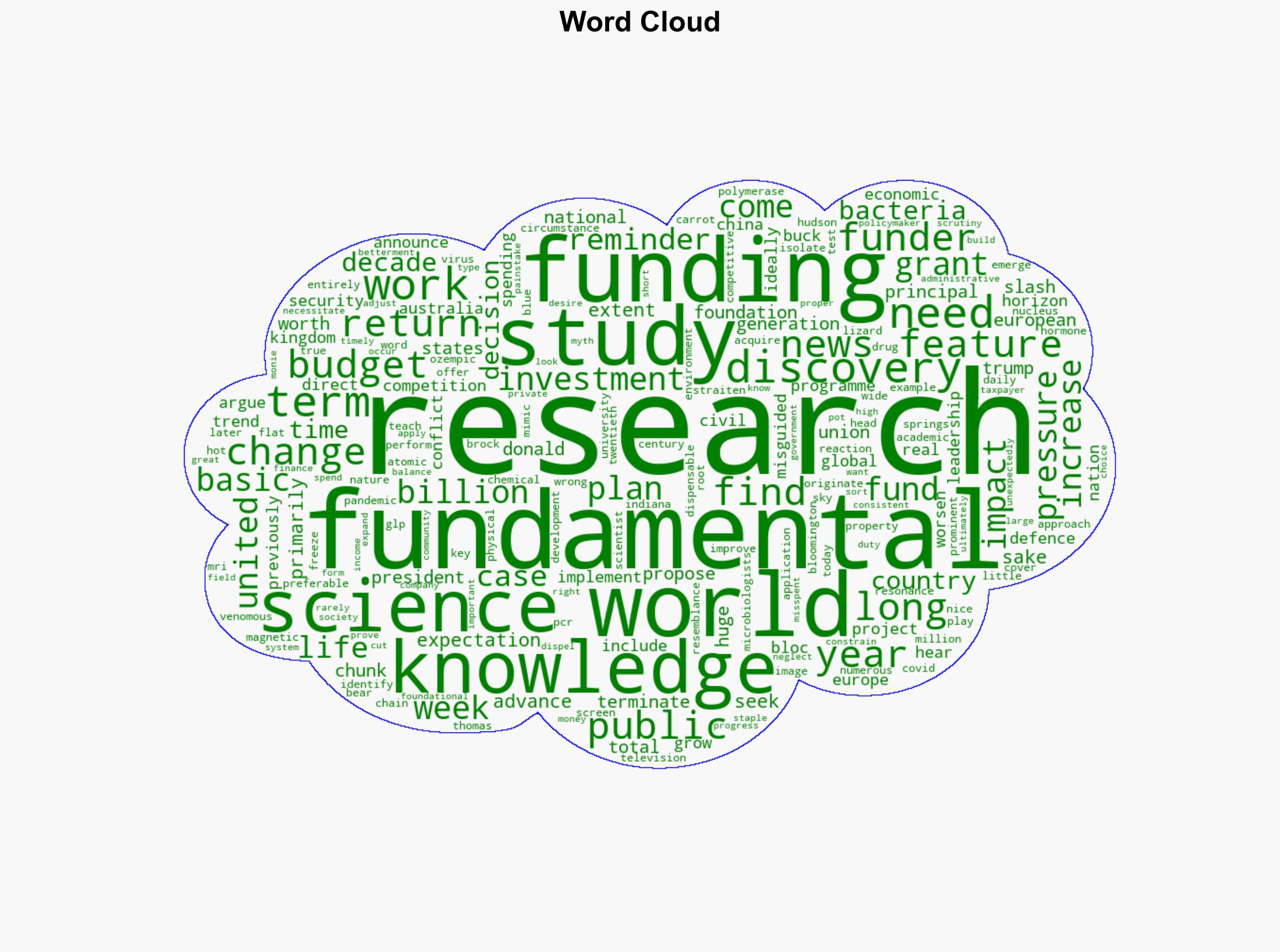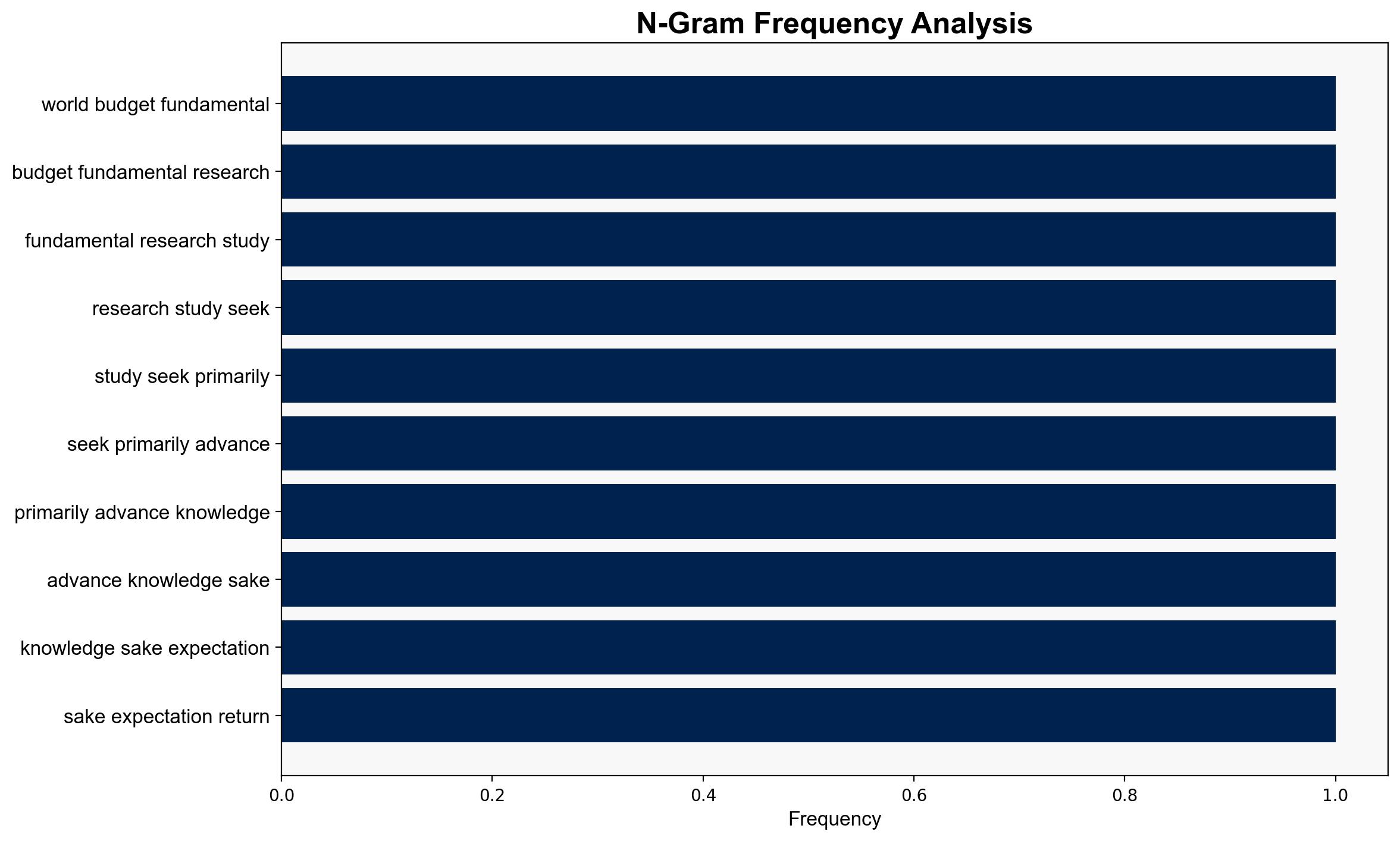From MRI to Ozempic breakthroughs that show why fundamental research must be protected – Nature.com
Published on: 2025-10-29
Intelligence Report: From MRI to Ozempic breakthroughs that show why fundamental research must be protected – Nature.com
1. BLUF (Bottom Line Up Front)
The strategic judgment suggests that the protection and funding of fundamental research are crucial for long-term societal and technological advancements. The hypothesis that increased funding for fundamental research leads to significant breakthroughs is better supported. Confidence in this assessment is moderate due to the variability in funding policies across different regions. Recommended action includes advocating for balanced funding strategies that prioritize long-term research benefits alongside immediate economic impacts.
2. Competing Hypotheses
1. **Hypothesis A:** Increased funding for fundamental research leads to significant technological and societal breakthroughs, as evidenced by historical examples like MRI and Ozempic.
2. **Hypothesis B:** Redirecting funds from fundamental research to applied research with immediate economic impacts is more beneficial in the current global economic climate.
Using the Analysis of Competing Hypotheses (ACH) 2.0, Hypothesis A is better supported due to historical precedents where fundamental research has led to unexpected and transformative applications. Hypothesis B lacks support in the long-term context, as it may overlook potential breakthroughs that require foundational knowledge.
3. Key Assumptions and Red Flags
– **Assumptions:**
– Fundamental research inherently leads to significant breakthroughs.
– Current economic pressures justify a shift in funding priorities.
– **Red Flags:**
– Potential bias towards short-term economic gains over long-term scientific progress.
– Lack of consistent global policy on research funding priorities.
– **Blind Spots:**
– Underestimation of the time required for fundamental research to yield practical applications.
– Possible neglect of interdisciplinary research benefits.
4. Implications and Strategic Risks
– **Economic:** Short-term funding cuts to fundamental research could stifle innovation and long-term economic growth.
– **Geopolitical:** Countries like China increasing their fundamental research funding may gain a strategic advantage in technological leadership.
– **Psychological:** Public perception may shift towards valuing immediate returns, undermining support for fundamental research.
5. Recommendations and Outlook
- Advocate for a balanced funding approach that supports both fundamental and applied research.
- Encourage international collaboration to share the burden and benefits of long-term research investments.
- Scenario Projections:
- **Best Case:** Increased global cooperation leads to sustained funding for fundamental research, resulting in major breakthroughs.
- **Worst Case:** Continued funding cuts lead to stagnation in innovation and loss of competitive advantage.
- **Most Likely:** Mixed funding strategies with regional variations, leading to uneven progress in research outcomes.
6. Key Individuals and Entities
– Hudson Freeze
– Thomas Brock
– National Science Foundation
– European Union
– Chinese leadership
7. Thematic Tags
national security threats, research funding, technological innovation, global competition




